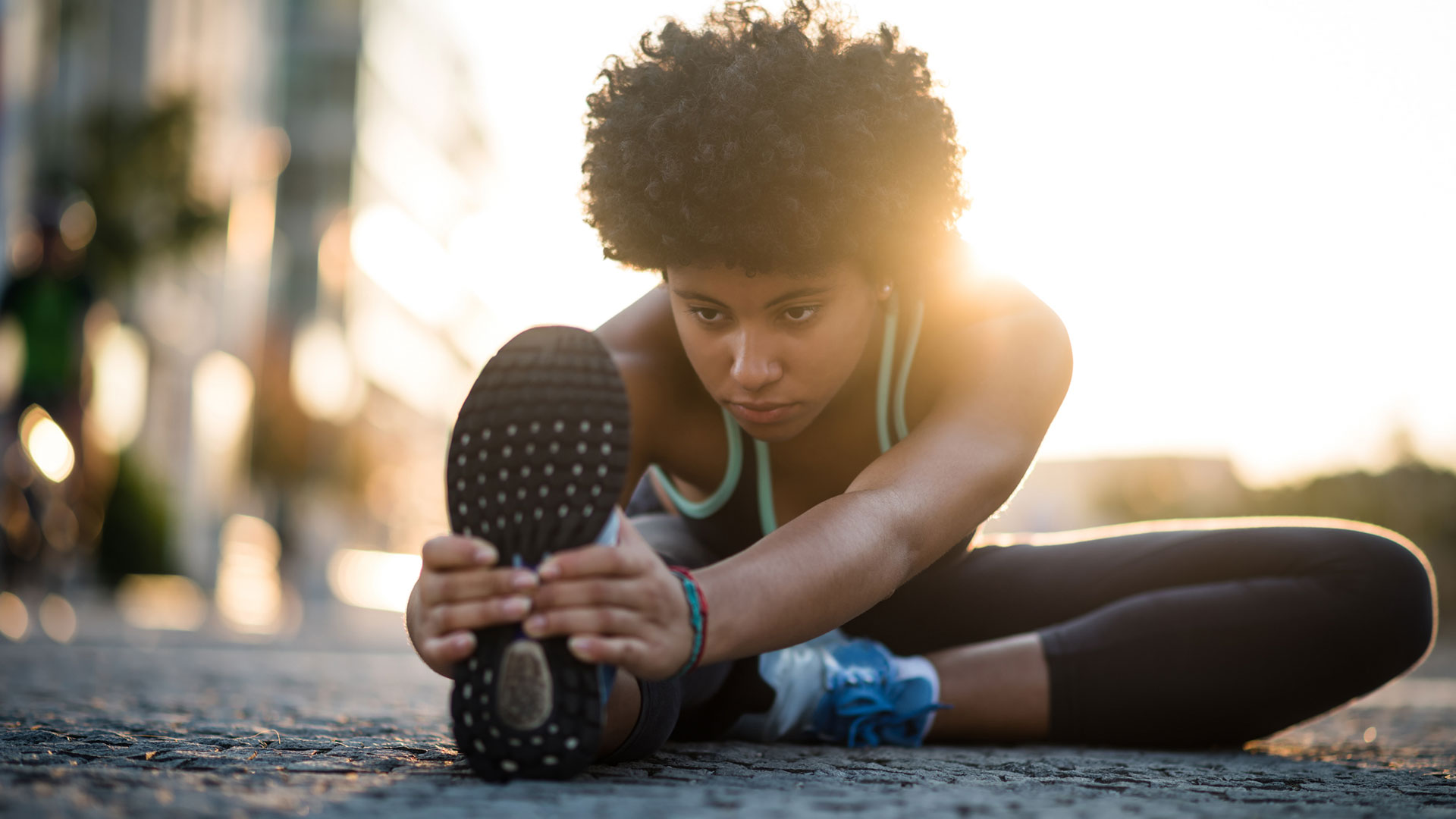How to get into running: top tips from a running coach
Wondering how to get into running? We spoke to an expert to give you all the guidance you need


Find out how to get into running so that you can build up your distance, and reap the benefits. After all, running is free and you have the flexibility of doing it anywhere or using one of the best treadmills. Plus, running burns a lot of calories.
The benefits of running are hard to ignore. Regular running can reduce your risk of conditions such as heart disease, type 2 diabetes, and stroke. It can also boost your mood and keep your weight under control.
Running requires little equipment, but a good pair of running shoes (check out the best running shoes for women or the best running shoes for men) that suit your running gait (how your legs and feet move as you run/ walk) to ensure you’re supporting your joints and preventing injury.
How to get into running: first steps
Rachael Bruford is a UK Athletics running coach who offers bespoke running mentoring. Bruford has run 10 marathons and three ultra-marathons, and countless shorter events. She knows that getting started with running can be intimidating.
“The main thing to remember is not to put pressure on yourself. You could perhaps reframe your ‘run’ as a ‘walk with some jogging sections’ at first. Keep things short, plan your route, and, when you are running, run a lot slower than you think you need to. After, think about what your body can do rather than what it can’t yet do. This will give you confidence for your next run.”
How to get into running: beginners’ plan
Rachael Bruford offers bespoke coaching, but many trainers recommend the Couch to 5K program as a running plan for absolute beginners. It was developed in 1996 by Josh Clark and used by millions of people to get their running practice started.
The plan involves three runs a week, with a day of rest in between and a different schedule for each of the nine weeks.
Start your week with achievable workout ideas, health tips and wellbeing advice in your inbox.

Week one
You will begin with a brisk five-minute walk for your three runs in week one. After this, you will alternate one minute of running and one-and-a-half minutes of walking, for a total of 20 minutes.
Week two
For your three runs in week two, you will begin with a brisk five-minute walk for your three runs. After this, you will alternate one-and-a-half minutes of running with two minutes of walking, for a total of 20 minutes.
Week three
For your three runs in week three, you will begin with a brisk five-minute walk, then two repetitions of one-and-a-half minutes of running, one-and-a-half minutes of walking, three minutes of running, and three minutes of walking.
Week four
For your three runs in week four, you will begin with a brisk five-minute walk, then three minutes of running, one-and-a-half minutes of walking, five minutes of running, two-and-a-half minutes of walking, three minutes of running, one-and-a-half minutes of walking, and five minutes of running.
Week five
There are three different runs this week:
Run 1: a brisk five-minute walk, then five minutes of running, three minutes of walking, five minutes of running, three minutes of walking, and five minutes of running.
Run 2: a brisk five-minute walk, then eight minutes of running, five minutes of walking, and eight minutes of running.
Run 3: a brisk five-minute walk, then 20 minutes of running, with no walking.
Week six
There are three different runs this week:
Run 1: a brisk five-minute walk, then five minutes of running, three minutes of walking, eight minutes of running, three minutes of walking, and five minutes of running.
Run 2: a brisk five-minute walk, then 10 minutes of running, three minutes of walking, and 10 minutes of running.
Run 3: a brisk five-minute walk, then 25 minutes of running with no walking.
Week seven
You will begin with a brisk five-minute walk, then 25 minutes of running for your three runs in week seven.
Week eight
You will begin with a brisk five-minute walk in week eight, then 28 minutes of running for your three runs.
Week nine
You will begin with a brisk five-minute walk in week nine, then 30 minutes of running for your three runs.
Bruford says not to beat yourself up if you miss a session when you are just starting. “A plan such as Couch to 5K shouldn't be a source of guilt if you miss a day or something to obsess over, particularly for new runners.”
Getting into running: ask the expert
You might have many questions before that first run. We asked Bruford some of the most commonly asked questions.
How do you stay motivated as a new runner?
- Arrange to meet a friend to run with as you’re more likely to go.
- Create a playlist that you love that you can only listen to when running.
- If your budget allows, treat yourself to something to keep yourself going! This could be anything from a new water bottle to funky socks or leggings.
- Switch up the route or time of day that you run.

How do you avoid injury?
Injuries are pretty common in new runners, often due to doing too much too soon or wearing unsuitable shoes, and not having an efficient running form.
My main tips to avoid injuries would be, firstly, to ensure that you warm up and cool down before and after each run, no matter how short it is. To begin with, your warm-up might be a brisk walk, but as you get more experienced, you may incorporate some gentle jogging, keeping things super relaxed and easy. Remember to prepare your body for what lies ahead, not tire yourself out before starting!
How often should you run?
It’s essential to listen to your body with this one. Ideally, as a beginner, your runs should be well spaced out throughout the week, and you should try not to run on consecutive days. A good example would be to run on Tuesday, Thursday, and Saturday or Sunday (not both). It’s much better to keep things light at first and gradually build up rather than risking potential injury, burnout, and lack of motivation. The main things you should be focusing on are the health benefits and enjoying the process.
What is best to eat and drink before a run?
No matter how long they have been running, all runners need to make sure they stay hydrated and well-nourished. Food-wise, this is something that most people need to experiment with and find out what works for them. Ensure you are not eating too close to heading out of the door, as this could make for an uncomfortable run.
If you’re running on a hot day, it’s also worth adding some electrolyte tablets to your water to make up for what you have lost through sweat.
Make sure you eat a balanced diet and stay hydrated throughout the week, rather than just focusing on before and after your run.
For more on this, find out the benefits of running or take a look at our feature answering; does running build leg muscle?
Catherine is a freelance journalist writing across titles such as Verywell Health, Healthline, The Daily Telegraph, Refinery29, Elle, and Vogue. She specializes in content covering health, fitness, wellness, and culture.
A once reluctant runner, Catherine has competed in 30 running events in the past five years and looks forward to one day running the London Marathon.
